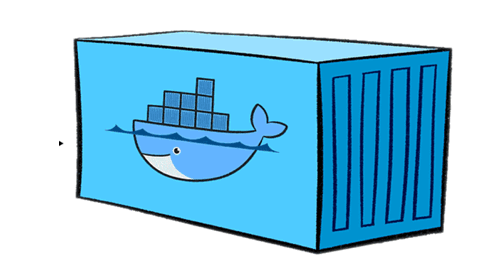Using Docker

Exploring the Docker CLI
🧑💻 Exploring the Docker CLI: Your Terminal-Based Power Tool
The Docker CLI (Command Line Interface) is where the real container action happens. Whether you’re on a Mac, Windows, or Linux, this is your go-to for running and managing Docker containers.
🔥 Getting Started:
-
Open your terminal:
-
Mac: Command + Space → type Terminal
-
Windows: Start → search for PowerShell or Command Prompt
-
Linux: You already live here 😉
-
🧠 The Basics:
Run this to see all your Docker options:
docker --help
You’ll see a list of top-level commands like:
-
docker run – Run a container
-
docker pull – Download an image
-
docker build – Build an image from a Dockerfile
-
docker ps – List running containers
-
docker images – Show local images
-
docker network – Manage Docker networks (more advanced)
🧰 Pro Tip:—help is your best friend
Every Docker command supports the —help flag. For example:
docker network --help
This shows:
-
What the command does
-
Subcommands (like create, connect, disconnect)
-
Flags and options available
Try it on a subcommand too:
docker network create --help
If you ever forget a flag or aren’t sure what something does — just tack on —help. Even pros do it all the time. 👍
TL;DR:
Docker CLI is powerful but friendly. Use —help like a built-in cheat sheet to explore commands and subcommands. Start simple, grow powerful. 💪🐳
Creating Docker Container

🧠 Docker Containers for Dummies (AKA Us)
👨🏫 “Let’s go the long way so we can appreciate how clutch the short way is.” – Wise Instructor Vibes
🌱 Step 1: Create a Container – The Long Way (aka manually adulting)
TL;DR:
Containers come from images (pre-packaged apps w/ environment + entry point = vibes).
👨💻 Run this:
docker container create hello-world:linux
📦 If you don’t have the image? Docker’s like, “No prob fam, I’ll grab it from Docker Hub.” ✅
🧙♂️ Output = Container ID (kinda like your container’s Social Security Number).
But wait… It doesn’t run yet. 💀
🚫 Step 2: Check Yo’ Container (It’s chillin’, not workin’)
docker ps # shows running containers (spoiler: yours ain’t there)
docker ps --all # ah there it is, just *vibin'* in “created” mode
🚀 Step 3: Start the Party
docker container start <your-container-id>
😶 Still no “hello”? That’s ’cause it ran and dipped. Check the logs like a hacker:
docker logs <first-3-letters-of-id> # Docker's got autocomplete magic
📜 BOOM. That sweet “Hello from Docker!” message. You did it, legend.
🧷 Bonus Round: Want Real-Time Drama?
docker container start --attach <id>
Now your terminal is attached to the container like you’re livestreaming its every move. 🎥
💡 Pro Tips:
-
You can restart containers without re-creating ’em. Think of them like reusable Starbucks cups ♻️
-
Docker doesn’t delete them unless you tell it to. Respect.
💬 Next up: The shortcut way (because we’re lazy but smart 😤)
Create a Docker container: The short way

⚡️ Docker Container Creation: The Short Way
👨🏫 “Remember the long way? Ew. Let’s upgrade.”
🎯 The Magic Command:
docker run hello-world:linux
💥 What Just Happened?
Docker did the whole dang thing for us:
docker run = docker container create + start + attach
No need to:
-
Manually start the container 🥱
-
Check logs with extra steps 🔍
-
Think too hard 🧠❌
🕵️♀️ Wanna Peek Under the Hood?
Wanna see what just ran?
docker ps --all
⛅ That “exited” status? That’s just Docker saying “I did my job, now I’m out ✌️”
📜 Need to See That Sweet Hello Again?
docker logs d90 # or whatever the first few characters of your container ID are
🎉 Output:
Hello from Docker!
Still hits like a warm hug from the command line 🫶
TL;DR Wrap-Up:
-
docker run is the Uber Eats of container commands. One stop, no drama.
-
No need to babysit containers unless they’re long-running.
-
Want the ID? Use docker ps —all
-
Forgot what happened? docker logs got you.
Create a Docker container from Dockerfiles, part 1
So far: We’ve just been vibing with pre-built containers from Docker Hub
But now: We’re about to DIY our own container from scratch 🔨
🗂️ What’s in the files
-
Dockerfile — our secret recipe 📜
-
entrypoint.bash — a lil’ script that just tells us the time ⏰ (cute, right?)
💡 Key Dockerfile 🔑 keywords
-
FROM:
Sets the base image (like saying “I want to start with Ubuntu vibes”)
Docker will pull it from the net if it’s not local 🌐
-
LABEL:
Meta info – who made this, etc. (think of it like the IG bio for your image)
-
USER:
Default is root = powerful but dangerous 😬
Use something like nobody for safety. Stay lowkey, stay safe 🛡️
-
COPY:
Copy files from your local folder into the image.
The “context” = the folder you’re building from 👀
-
RUN:
Runs commands during image creation.
Like installing curl + bash because your script needs it 🧑💻
-
ENTRYPOINT:
Sets what the container actually does when it runs (e.g., run that bash script!)
Could also use CMD, but they ain’t the same 😤 – check docs for that tea 🍵
🧠 TL;DR:
We’re now cooking our own Docker image using a Dockerfile, setting it up with the right tools, locking it down with the nobody user, and telling it what to do when it runs. Super secure, super chill 😎
Create a Docker container from Dockerfiles, part 2
🧠 The Mission
Turn that boring text file (aka Dockerfile) into a full-blown Docker Image, then run it like a boss. 💼
🛠️ Step 1: Build it like Bob 👷
docker build -t our-first-image .
🎯 Breakdown:
-
docker build: The builder tool 🧱
-
-t our-first-image: Give your image a cute name so you don’t have to memorize random IDs 🧠
-
. = current folder = your build context (aka, “this is where my files are bro”) 🗂️
📌 If your Dockerfile was called something else like app.Dockerfile, then:
docker build -t our-first-image -f app.Dockerfile .
⚙️ What Docker does behind the scenes:
Docker reading your Dockerfile:
-
It runs each line in your Dockerfile
-
Every line = 🧱 a new image layer
-
Layers = 🧇 like a stack of pancakes.
-
Final step: Squish it all together into one mega image 🤝
📦 Intermediate Images = Temp Layers
They’re like mini-versions of your image after each command.
“Temporary but essential, like YOUR gym motivation”
✅ All done? Run it!
docker run our-first-image
And boom 💥 you just ran a container from your own image.
🕒 And the result?
Your container says:
“Yo it’s [current time] ⏰, thanks for booting me up.”
Interact with your container
🧪 The Upgrade
Before: containers run → finish → vanish 💨
Now: We’re running server containers that keep chillin’ until we say otherwise 🧘
🚀 Building a Persistent Server Image
docker build -f server.Dockerfile -t our-first-server .
🧠 Remember:
-
-f = use this specific Dockerfile
-
-t = name your masterpiece
-
. = current folder is the context
😬 When you docker run our-first-server and it just hangs
You: Why?
Because the app inside is a server. It doesn’t exit, it just chills there… forever.
🔫 Killing it with fire (in another terminal)
docker ps # get container ID
docker kill <container_id>
You when you find and kill that stuck container:
🧍 Detach Mode = Your Best Friend:
docker run -d our-first-server
-
-d = run in the background
-
Saves your sanity and keyboard 🧘♂️
👀 Is it really running?
docker ps
“He lives!”
🧠 Bonus Hacks: Exec is OP
Run a command inside the container (without logging in)
docker exec <container_id> date
You: “Hey container, what time is it?”
Container: April 15th
Start a terminal inside the container
docker exec --interactive --tty <container_id> bash
-
—interactive = I’m typing things 😎
-
—tty = make it feel like a real terminal
When you’re debugging inside a container like a pro:
🏃 Exit like a ninja
Ctrl + D to dip out of the container shell
Don’t spam it or you might log out of your real terminal lol